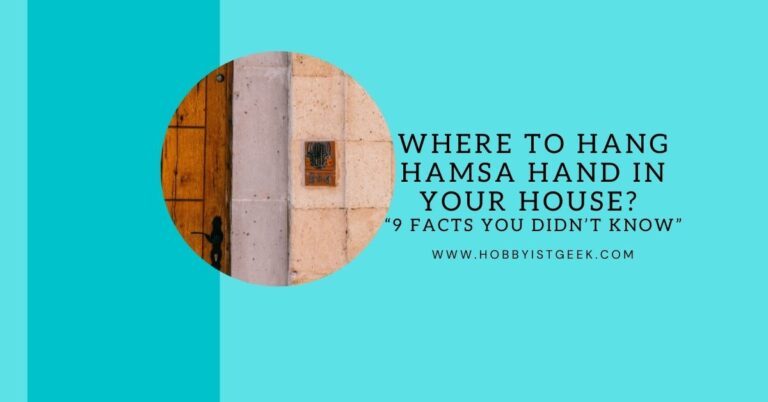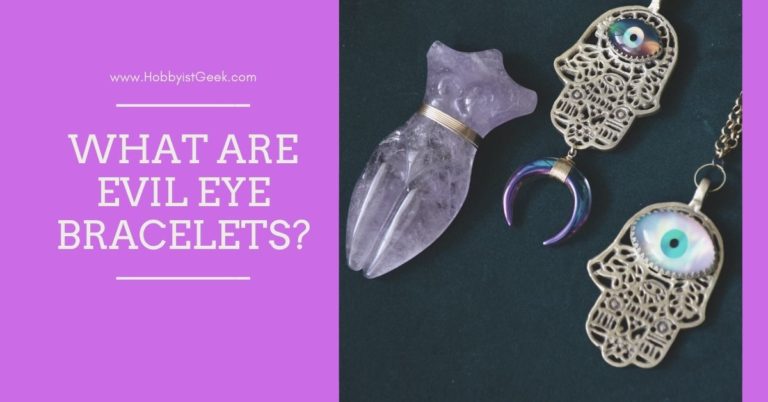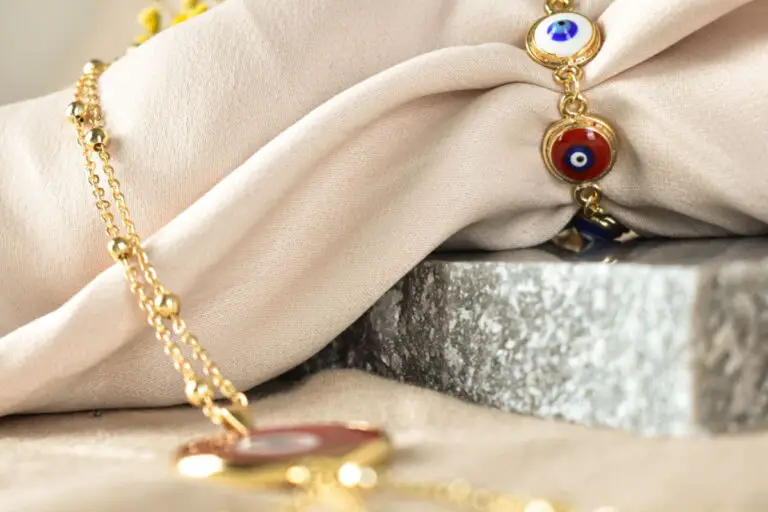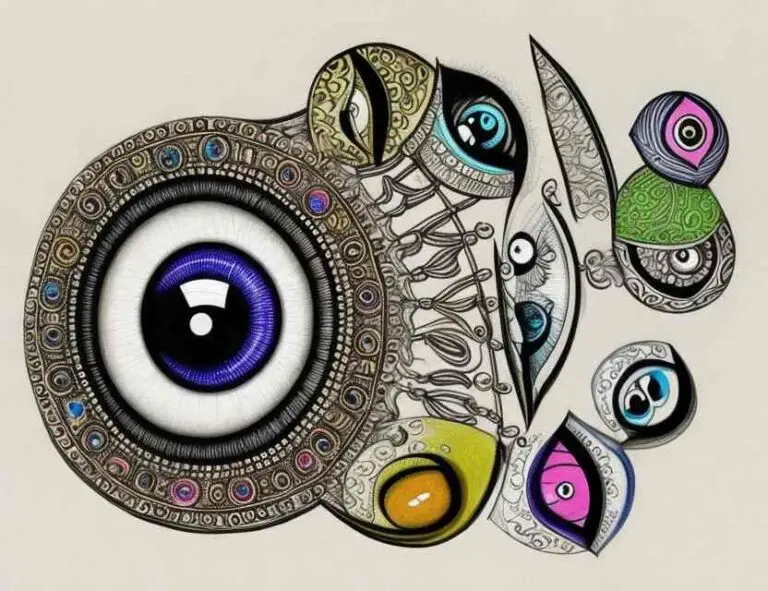Evil Eye History North African Countries: Explained
Important Takeaways For Evil Eye History North African Countries
- The belief in the evil eye is prevalent in North African countries like Morocco, Algeria, Tunisia, and Libya.
- The concept of the evil eye dates back about 5,000 years and is found in many cultures in the Mediterranean region, Western Asia, and Central Asia.
- The evil eye is believed to bring misfortune or injury to those who receive it, and it is also seen as a supernatural force that reflects a malevolent gaze back upon those who wish harm upon others.
- Protective measures are taken against the evil eye in these countries, with various cultural practices and rituals aimed at warding off its effects.
- The evil eye is often associated with envy and jealousy, and those who are successful, beautiful, or have children are considered more susceptible to its effects.
The countries in North Africa that believe in the evil eye, based on the provided information, are:
Evil Eye History North African Countries. North Africa, with its rich cultural tapestry, is home to several countries that hold a deep belief in the power of the evil eye.
Among these nations, Morocco stands out as a place where the influence of the evil eye folklore can be felt strongly.
Embedded within Moroccan culture for centuries, the fear and protection against the evil eye have become an integral part of everyday life.
From ancient traditions to modern practices, Moroccans have developed a multifaceted approach to dealing with this malevolent force.
In Algeria, too, the belief in the evil eye runs deep.
It finds its roots in ancient traditions and mythology that depict the power of this enigmatic gaze as capable of causing harm and misfortune.
Algerians have long been aware of this threat and take precautions to protect themselves from its effects.
Through rituals and talismans, individuals seek shelter from the potential harm caused by those who possess an unintentional or intentional malevolent gaze.
Tunisia is another North African nation where the presence of evil eye beliefs can be observed. Here, people hold strong superstitions regarding its potential influence on their lives.
Tunisians often associate certain symbols or objects with warding off the evil eye’s negative effects.
These symbols can vary from blue beads adorning homes and clothing to intricate amulets believed to possess protective properties against this mystical force.
Libya cannot be overlooked when discussing North African countries influenced by beliefs surrounding the evil eye.
Within Libyan society lies a rich cultural heritage intertwined with various superstitions related to warding off ill fortune brought about by envy or malicious intent through an ominous gaze.
These customs are deeply rooted in historical references and legends passed down through generations.
The countries of North Africa share a common thread – an unwavering belief in protecting oneself from the malevolent powers associated with gazing eyes filled with envy or ill intentions.
Through their unique cultural practices built upon ancient traditions and folklore, Moroccans, Algerians, Tunisians, and Libyans demonstrate the significance of the evil eye in their lives.
It is a reminder of the enduring power of superstition and the lengths to which people will go to safeguard themselves from its potential effects.
The Evil Eye And Its Cure
What Is The History of the evil eye in Morocco?
Morocco, a country rich in cultural heritage and ancient traditions, has a long-standing belief in the evil eye.
For centuries, the Moroccan people have held strong superstitions regarding this mystical phenomenon. The evil eye is deeply ingrained in Moroccan folklore and remains an integral part of their cultural beliefs.
According to Moroccan tradition, the evil eye refers to malevolent energy that can be cast upon individuals through envy or admiration.
It is believed that certain individuals possess a potent gaze capable of inflicting harm or misfortune upon others.
To protect themselves from this malevolence, Moroccans rely on various amulets and talismans. One popular form of protection against the evil eye in Morocco is the Hamsa hand.
This symbol, also known as the Hand of Fatima, represents blessings, power, and strength. It is often worn as jewelry or hung in homes to ward off negativity brought by the evil eye.
Another prevalent practice among Moroccans is the use of blue beads or Nazar boncuk charms.
These vibrant blue talismans are believed to absorb any malevolent energy directed toward an individual and bring them good luck and protection.
In addition to physical protection, rituals are also performed to counteract the effects of the evil eye.
One such ritual involves burning incense made from herbs like sage or rosemary while reciting prayers or specific verses from religious texts such as the Quran.
The history of the evil eye in Morocco extends beyond mere superstitions; it has become interwoven with their identity and culture over time.
Legends and stories have been passed down through generations, further solidifying its significance within Moroccan society.
While modernization has influenced many aspects of Morocco’s cultural practices, belief in the evil eye remains a deeply rooted tradition that continues to be embraced by Moroccans today.
Whether through protective amulets or symbolic gestures aimed at repelling negative energies, this belief system serves as a testament to the enduring power of ancient traditions in shaping the Moroccan people’s worldview.
What Is The History of the evil eye in Algeria?
Algeria, a country in North Africa, has a long-standing belief in the evil eye that is deeply ingrained in its cultural fabric.
The history of the evil eye in Algeria can be traced back to ancient times when it was believed that certain individuals had the power to cast malevolent glances that could bring harm and misfortune upon others.
This concept of the evil eye was not limited to Algeria alone but was shared by various cultures across the region. In Algerian folklore, there are numerous legends surrounding the evil eye and its effects.
Stories were passed down through generations, warning people of its potential dangers and providing remedies or protection against its influence.
These tales often depicted individuals who possessed an envious or malicious gaze capable of causing illness, crop failure, or even death.
Such legends served as cautionary tales for both children and adults alike. The belief in the evil eye also found resonance within religious texts followed by Algerians.
Islamic traditions have references to protecting oneself from the malevolence of the evil eye through prayer and recitation of specific verses from the Quran.
The faithful often seek divine protection against this perceived threat by invoking Allah’s blessings and seeking refuge from any harm that may come their way.
Throughout Algerian history, there are historical references to events influenced by beliefs surrounding the evil eye.
For instance, during times of drought or poor harvests, the blame would often be attributed to someone casting an unintentional glance with ill intentions toward agricultural land or livestock.
This belief led communities to take preventative measures such as wearing protective amulets or reciting prayers to ward off any negative impact caused by these harmful gases.
Even today, in modern Algeria, practices related to protecting oneself from the ill effects of the evil eye continue to exist.
Many Algerians wear talismans or amulets adorned with symbols believed to ward off negative energy associated with envy or jealousy.
Additionally, traditional rituals involving burning incense or placing salt in specific areas of the home are performed to cleanse and protect against the evil eye’s influence.
The cultural significance of the evil eye in Algeria extends beyond mere superstition. It serves as a reminder of the delicate balance between envy and goodwill within society.
By being aware of its potential impact, Algerians strive to maintain harmony within their communities and protect one another from any unintentional harm that jealousy or envy may cause.
Algeria’s history is intertwined with a belief in the evil eye.
Legends, religious texts, historical references, and modern practices all bear witness to the cultural significance attached to this concept.
The evil eye serves as a powerful symbol through which Algerians navigate their interactions with others and seek protection from its malevolent influence.

What Is The History of the evil eye in Tunisia?
In Tunisia, the belief in the evil eye is deeply rooted in their culture and folklore. The history of the evil eye in Tunisia can be traced back to ancient traditions and mythology.
According to Tunisian folklore, the evil eye is believed to be a powerful force that can bring harm or misfortune to individuals.
It is often associated with envy or jealousy, as it is believed that those who possess these negative emotions are more likely to cast the evil eye.
The symbolism of the evil eye in Tunisia reflects its pervasive presence in everyday life.
It is common to see protective talismans, known as “nazars,” adorning homes, shops, and even personal belongings.
These blue-eyed amulets are believed to ward off the malevolent effects of the evil eye by deflecting its negative energy.
The belief in the evil eye has been passed down through generations and has become an integral part of Tunisian culture.
Ancient civilizations such as the Carthaginians and Romans also had references to the concept of the evil eye in their historical texts.
The influence of these civilizations undoubtedly contributed to shaping Tunisia’s beliefs and practices surrounding this phenomenon.
To protect themselves from the potential harm of the evil eye, Tunisians have developed various superstitions and protective measures.
For example, it is common for mothers to dress their infants in clothing adorned with blue beads or use items such as hamsas (hand-shaped amulets) for protection against this perceived threat.
While there are no specific religious texts that explicitly mention the concept of the evil eye in Tunisia’s predominant religion, Islam, many Tunisians incorporate Islamic prayers and rituals into their practices for protection against this mystical force.
Tunisia’s history with regard to belief in the evil eye runs deep within its cultural fabric.
Through ancient traditions, mythology, symbolism, historical references from past civilizations like Carthage and Rome, as well as religious influences from Islam, Tunisians have developed a rich tapestry of beliefs, superstitions, and protective practices to guard against the potential harm of the evil eye.

What Is The History of the evil eye in Libya?
In Libya, the belief in the evil eye runs deep within the cultural fabric of the country. This ancient tradition has been passed down through generations, shaping the way people perceive and protect themselves from its malevolent effects.
The history of the evil eye in Libya is intertwined with its neighboring countries in North Africa and the Mediterranean region, where similar beliefs are held.
The evil eye, known as “ayin harsha” in Arabic, is seen as a powerful force that can bring misfortune and harm to individuals. It is believed that envy and jealousy can manifest into an actual curse through someone’s gaze.
Libyan folklore is filled with stories of individuals falling victim to this curse, leading to illness, accidents, or even death.
To combat this threat, Libyans have developed various protective practices over time.
One common method involves wearing amulets or charms with symbols believed to ward off the evil eye’s influence. These symbols often include eyes or hands with open palms, representing protection against negative energy.
Furthermore, certain rituals are performed to cleanse oneself or loved ones from any existing curses.
These rituals can involve reciting prayers or verses from religious texts such as the Quran or invoking specific incantations handed down through generations.
The cultural significance of the evil eye in Libya extends beyond personal beliefs and protections.
It is also reflected in art forms such as pottery and jewelry, where intricate designs featuring eyes can be found.
These representations serve not only as decorative elements but also as a means of safeguarding against potential harm.
While modernization has certainly influenced Libyan society, belief in the evil eye remains prevalent among many individuals.
The traditions associated with it continue to be passed down within families and communities as a way of preserving their cultural heritage.
Libya’s history intertwines with a strong belief in the power of the evil eye.
This ancient tradition influences various aspects of daily life and holds significant cultural importance for Libyans today.
Whether through protective symbols, rituals, or artistic expressions, the belief in the evil eye shapes their perceptions and practices, safeguarding against its perceived malevolent effects.
Final Thoughts
The belief in the evil eye has a long history in the North African countries of Morocco, Algeria, Tunisia, and Libya. It is a concept deeply ingrained in the cultural fabric of these societies, dating back thousands of years.
The evil eye is believed to bring misfortune and harm to individuals, particularly those who are successful or possess qualities that may arouse envy. To protect against its effects, people in these countries employ various protective measures and rituals.
The belief in the evil eye reflects the cultural significance placed on warding off negative energies and maintaining personal well-being.
Frequently Asked Questions
What is the history of the evil eye in Eastern Europe?
The belief in the evil eye has a long history in Eastern Europe, dating back thousands of years. It appeared on Chalcidian drinking vessels in the 6th century BC and was considered a form of protective magic. The evil eye has persisted in various cultures across Eastern Europe, with the belief that receiving the evil eye can lead to misfortune or injury.
Which cultures in Eastern Europe believe in the evil eye?
The belief in the evil eye is widespread across Eastern Europe. It occurred in ancient Greece and Rome, Jewish, Islamic, Buddhist, and Hindu traditions, as well as in indigenous, peasant, and other folk societies. The concept has persisted throughout the region into modern times.
Who is most often associated with casting the evil eye in Eastern Europe?
In Eastern European folklore, various individuals are often accused of casting the evil eye. This includes strangers, malformed individuals, childless women, and old women. However, beliefs vary among different cultures, and factors like malice, envy, and resentment towards prosperity and beauty are also considered potential causes of the evil eye.
What measures are taken in Eastern Europe to ward off the evil eye?
In Eastern European folklore, various individuals are often accused of casting the evil eye. This includes strangers, malformed individuals, childless women, and old women. However, beliefs vary among different cultures, and factors like malice, envy, and resentment towards prosperity and beauty are also considered potential causes of the evil eye.
How has the evil eye influenced the cultural practices in Eastern Europe?
The belief in the evil eye has influenced various cultural practices in Eastern Europe. In medieval Europe, it was considered unlucky to be praised or have one’s children or possessions praised openly. Specific qualifying phrases, such as “as God will” or “God bless it,” were commonly used to avert the potential effects of the evil eye. These practices highlight the cultural significance and cautionary attitudes towards the evil eye in Eastern Europe.
If you loved reading Evil Eye History North African Countries: Explained you will love Evil Eye History Middle East: Exploring the Ancient Beliefs in Middle Eastern Countries. Let me know what you think.
Resources for the article “Evil Eye History North African Countries”
- Evil eye – Wikipedia
- The Myth of the Werehyena and the Fear of the Other in the Horn of Africa – Atlas Obscura
- Evil eye | Protection, Superstition & Beliefs – Britannica
- What Each Culture and Country Believe About The Evil Eye – Svanadesign
- The strange power of the ‘evil eye’ – BBC Culture
- Evil Eye Hand: Unveiling the Mystical Origins and Meanings - February 2, 2024
- Amegreen Amethyst Meaning: Discover the Hidden Magic! - February 2, 2024
- Is The Evil Eye Bad?: A Deep Dive into Evil Eye Taboos - February 2, 2024









